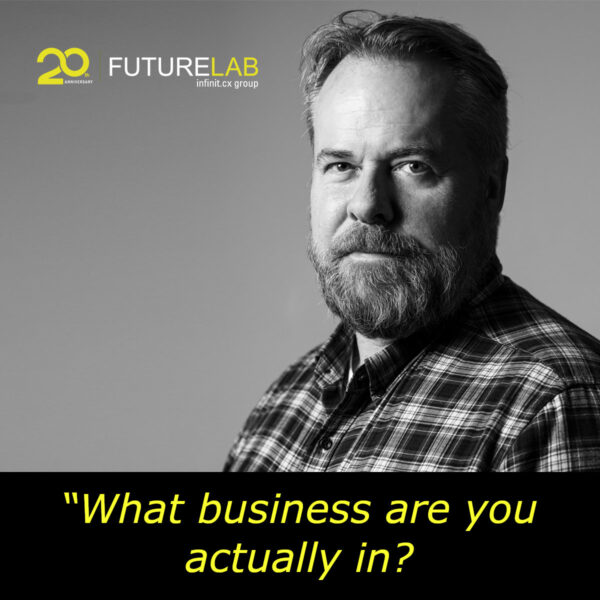Consider this a double-dose of Roger’s Picks since we missed the previous week’s wrap-up… And, if YOU found a compelling article or blog post this week, add it in a comment!
In The Science of Storytelling & Memory and Their Impact on CRO , author Ankit Oberoi describes how Rob Walker and Joshua Glenn increased the selling price of items by 6,000%… with stories! This is a long, detailed post at ConversionXL with plenty of examples, not to mention the science behind why stories embed themselves in your memory.
Laura Hudson of Wired shows the surprising effect that screen symbols can have in The Human Brain Now Reacts to Emoticons Like Real Faces. Emoticons, particularly the most common version of the “smiley,” are processed like facial expressions. Read it, you’ll smile!
We all know that art lives in the right brain and math in the left… except it’s not true. In fact, beauty in art and mathematics have a lot in common. Even though a simple, powerful equation would seem to have little in common with a Renoir sketch, Dr. Jeremy Dean talks about how beauty in both areas of endeavor lights up the same part of the brain: Beauty in Art and Mathematics Activates The Same Brain Region.
Split-testing has been mostly out of the question for bloggers and small site owners. The technology often cost more than any potential benefits. Now, if you want to see which “Subscribe” button works better, you have an option. Convert.com and Yoast (best known for their superb SEO plugins) have collaborated on a simple A/B testing system for WordPress. Check Convert Experiments, a WordPress plugin from Yoast. It provides advanced A/B and MVT Testing functionality for your website or blog, and even comes with a free (albeit volume-limited) subscription to Convert.com.
I’ve been spending a lot of time thinking about applying The Persuasion Slide to more complex persuasion tasks, but one area that didn’t occur to me was the legal world. In Use the ‘Persuasion Slide’, Dr. Ken Broda-Bahm explains how to use my model to effectively persuade juries, opposing litigants, and more. It’s an interesting extension of the model!
Gawain Morrison, co-founder of neuromarketing software company Sensum, suggests in a Guardian article that neuromarketing can be a powerful tool for building CMO credibility. In Neuromarketing: the final piece of the marketing measurement puzzle? , Morrison explains the importance of combining the art of marketing the insight of science. Marketing isn’t subjective because CMOs are math and science-challenged, it’s because they haven’t had the tools to give them hard data.
Does your brain check out when charts and graphs pop up on a screen? The versatile Avinash Kaushik teaches us how to make a lasting positive impression, even when presenting otherwise boring data. There are plenty of helpful (and illustrated!) tips in 7 Data Presentation Tips: Think, Focus, Simplify, Calibrate, Visualize++. Data doesn’t have to be a cure for insomnia!
Monika Mundell teaches us the art of “persuasion with conversation” in The Practical Guide to Writing Conversational Copy. Monika thinks if you write in the same way that you speak, you’ll be more engaging and memorable. I love her sub-head, “Creative Ways to Give Your Copy Cult-Like Resonance” – if only!
If you want to persuade, first you’ve got to get and hold the other person’s attention. Brainy Eric Barker lists the 7 Ways To Be the Most Interesting Person in Any Room. Eric draws on experts ranging from Dale Carnegie to Dan Ariely to come up with ways to be sure you don’t blend into the wallpaper.
My Stuff
One more elevator post, and I’ll become an honorary member of the Elevator User Experience Association… if there was such a thing. In Riddle: When Is Twitter Like an Elevator?, I start with a strange, identical wear pattern on a group of elevators in a Los Angeles-area hotel. That observation reminded me of a weird user experience failure on Twitter.com. What’s the common thread? Buttons with unexpected consequences. Ecommerce and lead generation sites beware…
Why did Instagram and Pinterest grow like topsy, where other, similar applications got little or no traction? Nir Eyal’s book, Hooked: How to Build Habit-Forming Products, shows how these apps were designed to become habits. Eyal’s Hook Model is a blueprint for making websites, apps, and other products addictive (in a good way). Read my review at Forbes.com: Hooked: Building Value with Addiction.
Big news for Neuromarketing fans – soon, you’ll be able to get content piped directly into your head (via earphones)! The Brainfluence Podcast is coming in a few weeks. So, check out Brainfluence Podcast: Who Do YOU Want to Hear From? and leave a comment with a suggestion or two for who you’d like to be on our guest list. Any name that gets some support will get an invite!
These are my picks for the week – add your own in a comment!
Original Post: http://www.neurosciencemarketing.com/blog/articles/rogers-picks-7-ways.htm




